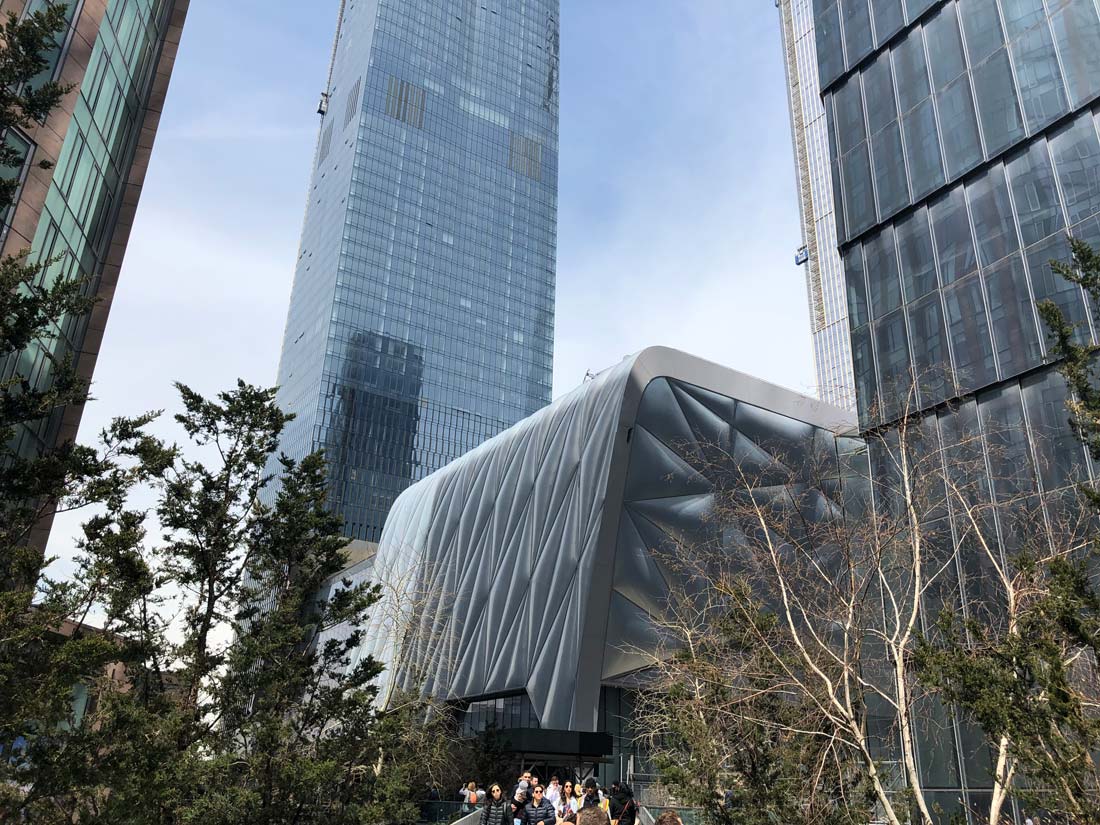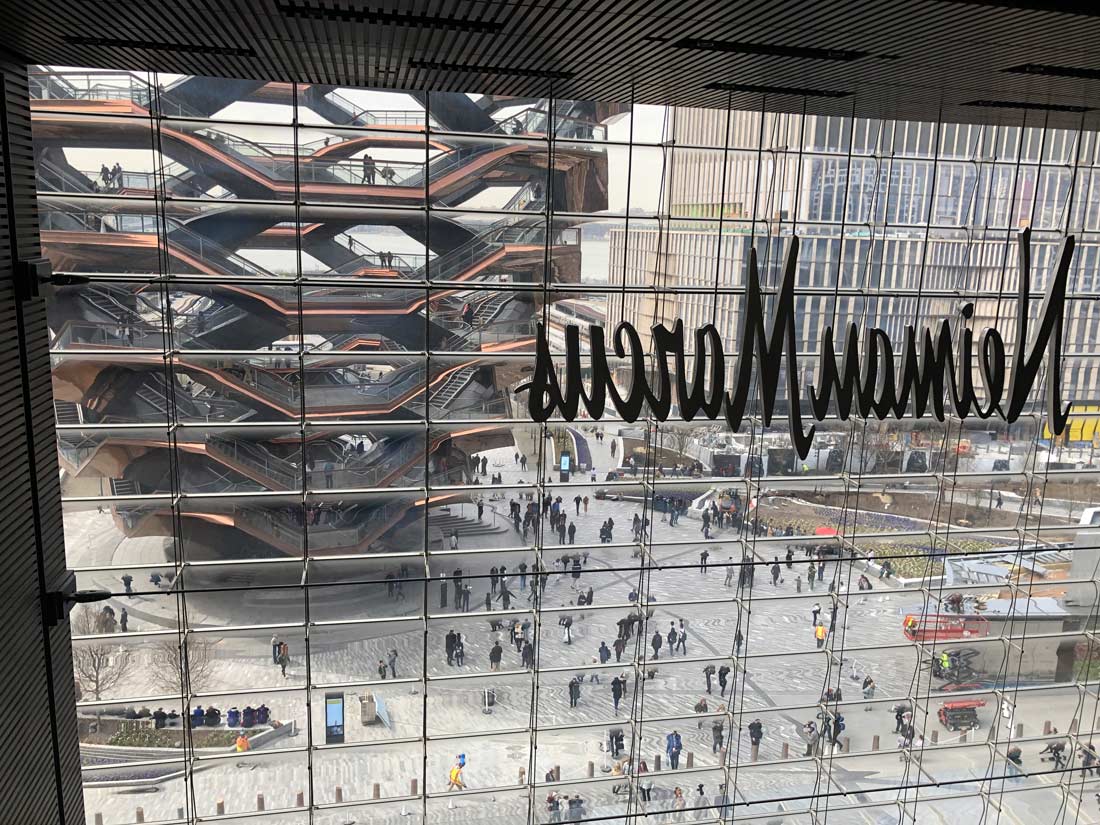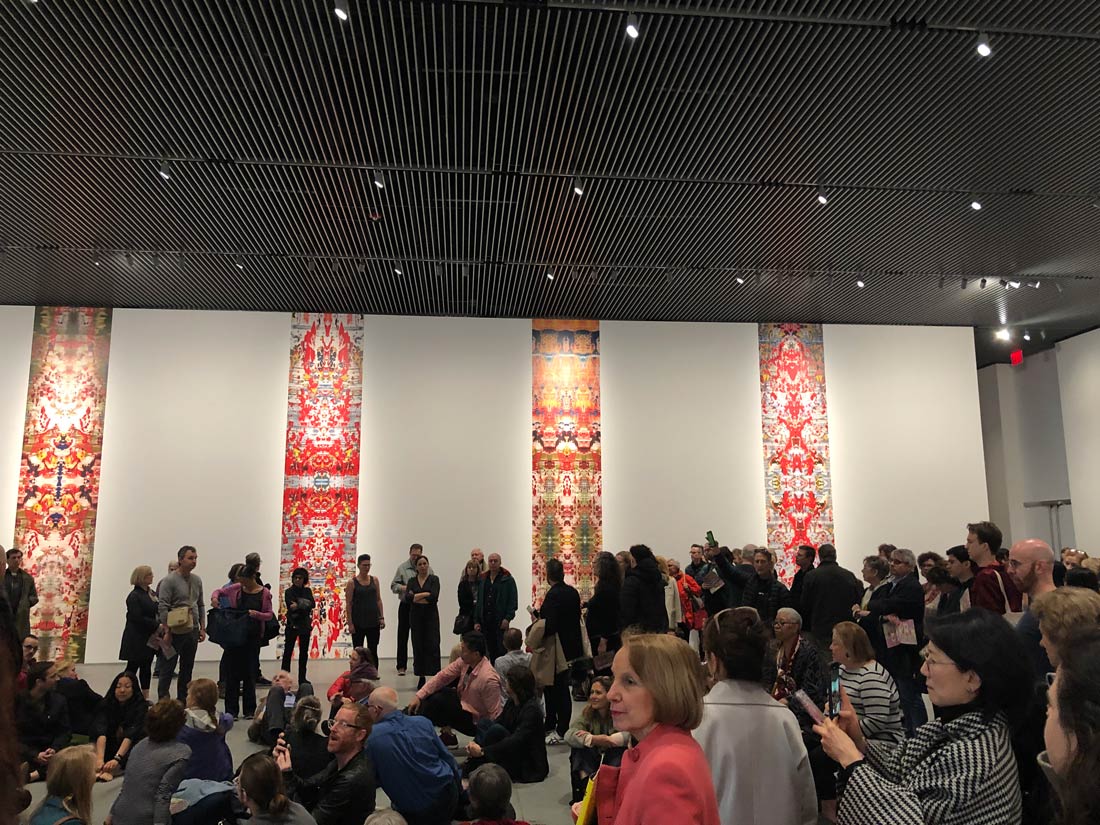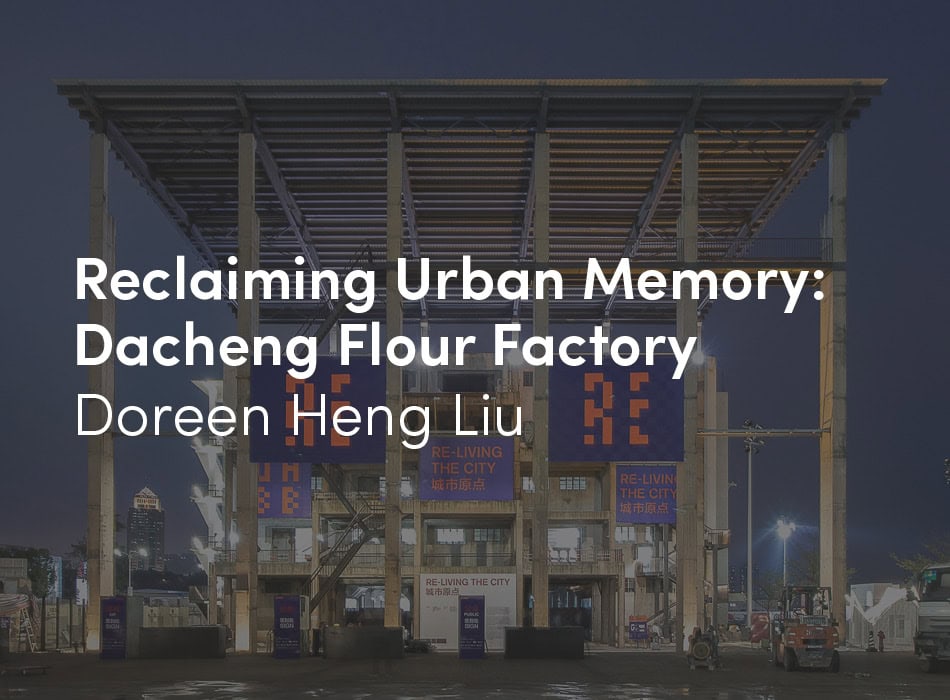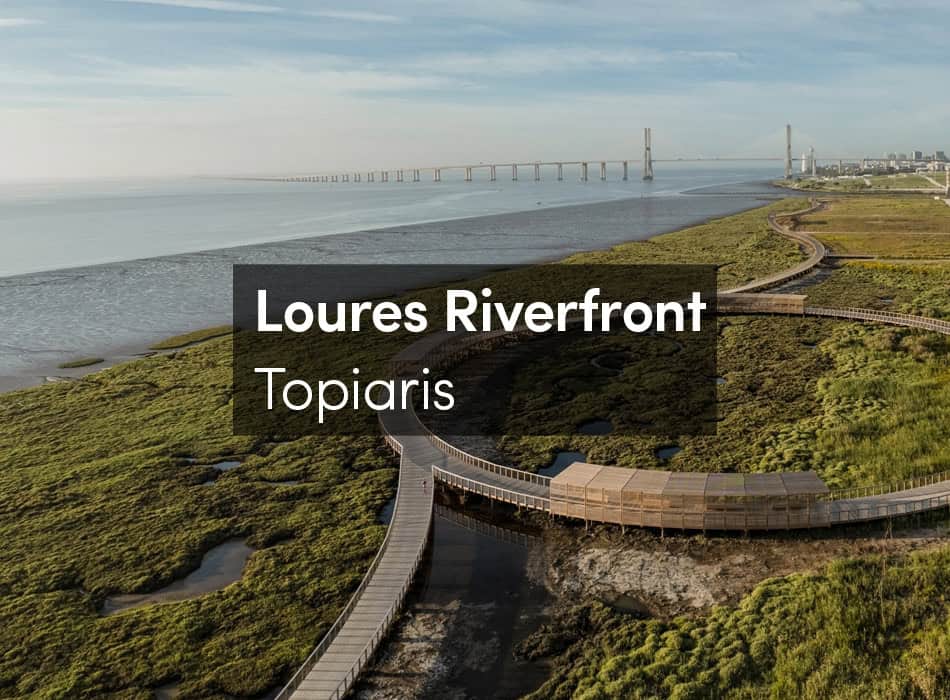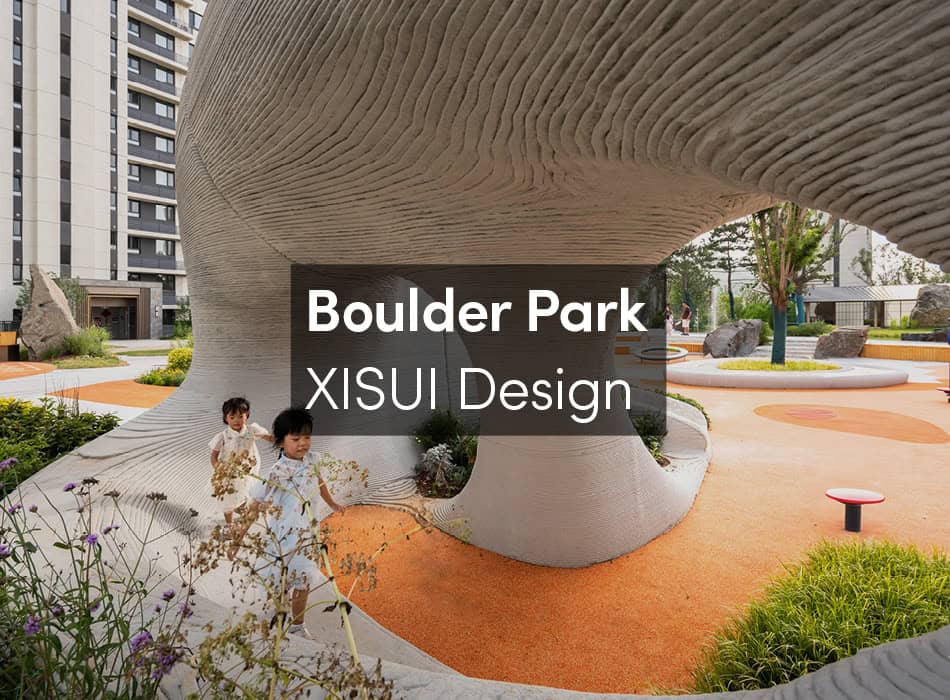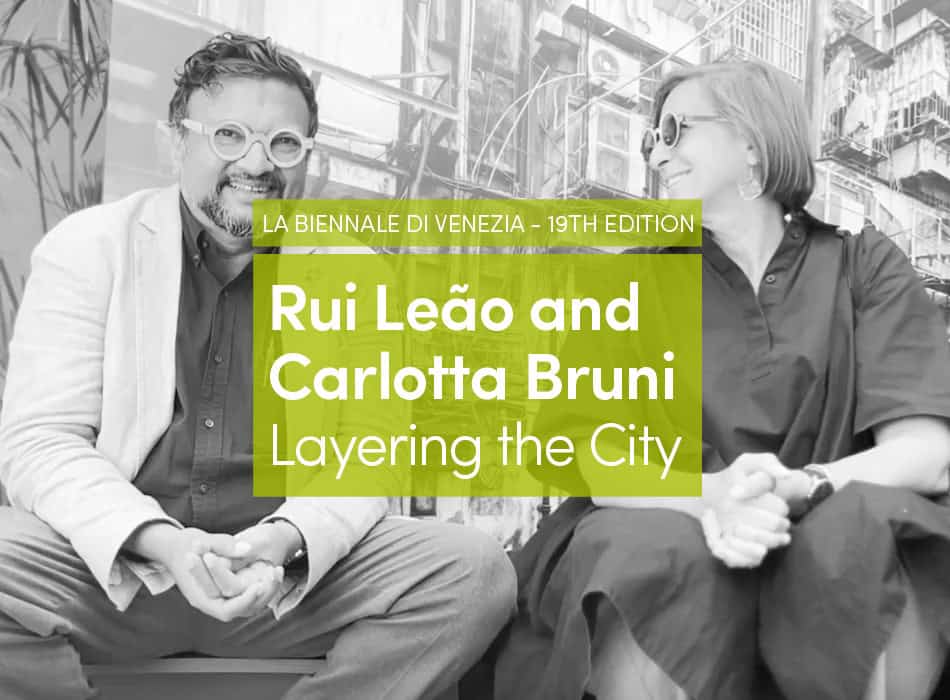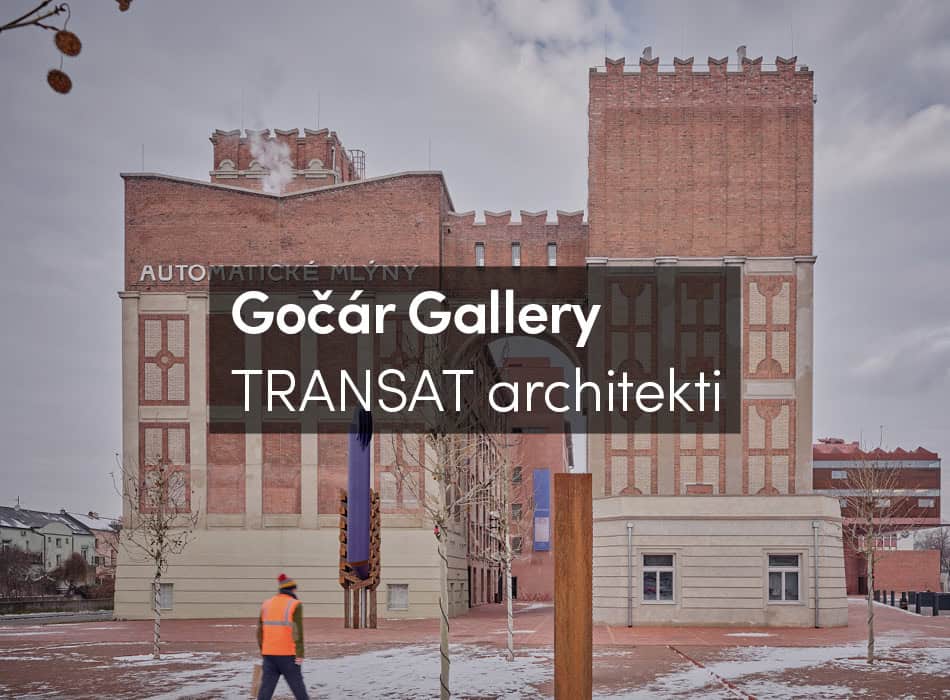Designed by Diller, Scofidio & Renfro, who also designed the High Line, “The Shed” and its surroundings are definitely an area to be photographed. It is grand, picture ready from all angles, an explicit invitation to any voyeur. The Shed is a $475 million performing arts center recently opened at the Hudson Yards development on the west side of Midtown Manhattan.
I had a hard time finding the entrance to “The Shed” because the area is still under construction, as I write. Once inside the building, ushers directed you to the main gallery, where the work of Reich Righter, a German visual artist, was being shown in one of the large galleries. The paintings hung like tapestries, full of colors. A choir of walking singers – the Grammy-nominated Choir of Trinity Wall Street – blended with the curious and surprised crowd, singing Hallelujah. People were sitting on the raw concrete floor that resembles an effortless design goal, a tabula rasa of sorts – space as canvas. Appropriate.
After the performance ended, we were directed to the second gallery, equally spacious. There was a long bench running along each side of the gallery wall with a painting of fine colorful lines on two of the four walls. A musical ensemble – “Ensemble Signal” – was situated in the middle. Everyone in the audience, as they arrived, sat around the musicians: on the floor, on folding chairs or pillows, offered by the venue. A large video screen was lit up with fine colorful lines similar to the paintings on the wall, moving along with the music composed by Arvo Part. The audience reoriented themselves spontaneously from the music ensemble to the large video screen at the opposite end of the gallery. This mesmerizing display of art, by Righter and Part, among others, continued for what seemed like a long period of time, likely 45 minutes or so. It was really beautiful. When the performance ended, there was yet another large gallery, towards which we all gravitated with spontaneous curiosity, drawn to the open space. The installation, a large tree trunk and other pieces of trees wrapped in plastic at their ends, by Trisha Donnelly, seemed lost and antagonistic to the inside vast space of the gallery.
We all had the opportunity to explore the space; it was actually an invitation to explore the space. We opened doors that weren’t meant be opened during our explorations, to find mops or electrical cords. Everything seemed open and accessible, no guards or ushers.
The sunlight that filtered in from the outside attracted us to a space where there were benches placed strategically to allow for a view of “The Vessel,” the most recent extravagant permanent display on the Hudson Yards, to be looked at and photographed from yet another perspective. This is the centerpiece of this brand new enclave of luxury and attraction for tourists seeking memorable moments in the city: checked (√). This is also where the High Line begins or ends, depending on your point of departure, in this NYC tourist elevated public space par excellence.
Continuing the exploration of “The Shed,” there was access to yet another movable piece in this space designed for versatility: stacked benches on wheels. They sat overlooking a space at the bottom level, where a band was rehearsing for a concert that evening. They did not allow entrance to the upper levels where there is a skylight room on the top floor (the eighth), and a theater on the seventh floor. Down in the lobby, gallons filled with refreshing water offered the guests fruit- and veggie-flavored clear liquid. There is a bar and a sitting area with the most comfortable, diversely designed chairs. There were buttons with the brand “The Shed” and napkins with drawings of architectural renderings. All the workers – likely New Yorkers – were gracious, inviting, friendly, fun. Memberships began at $10. I am sure many New Yorkers and aficionados of the city will consider it a highlight. There was a selection of titles with movable bookshelves from McNally Jackson, one of our dear independent bookstores, which also graced the lobby. The industrial design made the space feel like it will always remain a work in progress.
In the mission statement, the discourse about social and economic barriers, and art as a right and not a privilege, seemed rather disjointed from the general feeling of this luxurious enclave:
The Shed commissions original works of art, across all disciplines, for all audiences. We bring together established and emerging artists in fields ranging from hip hop to classical music, painting to digital media, theater to literature, and sculpture to dance. […] [It] is an unprecedented movable structure that adapts to support ambition and invention in all creative fields.
By minimizing social and economic barriers to entry we’ll make a warm, welcoming space for innovation and unique artistic experiences. By offering access and insight into the creative process, we’ll forge deep bonds between our artists and our audiences. Driven by our belief that access to art is a right, and not a privilege, we’ll present exciting, engaging experiences for our communities and our time. (https://theshed.org/about)
Outside, a constant flow of pedestrians made the space alive with visitors, workers, construction workers, and most certainly tourists who stood in line outside “The Vessel” to climb up. The reflection of the ground on the polished finish of “The Vessel” resembled slightly the effect of Anish Kapoor’s Cloud Gate in Chicago, another initiative driven by the creation of an iconic public landscape around a distinct public art sculpture as a permanent installation. “Create public art and a mall, and they will come” seems to be the maxim of contemporary luxury developments to attract consumers / tourists / residents. Hudson Yards is the most recent example in Manhattan.
Inside, the shopping mall – or, as more recent urban development strategies call it, “urban vertical retail” – offered glaring views of “The Vessel,” a focal point from all angles. The shopping mall is redundant, somehow a sad reminder that, above all, this is a space to consume: culture, views, food and products, behind the signature name of Neiman Marcus displayed on the front glass wall of the shopping complex. This is the newest guise for the evolving nature of branding public-private consumer spaces “forced to go vertical” in densely developed and populated urban centers. Garden (2019) identifies four main components for a vertical center to succeed. These include location (New York City), mixed uses (dining, retail, residential), spatial features (“The Shed,” “The Vessel”), and circulation (strategically located escalators and elevators). Inside, the usual suspects, H&M and Zara are located alongside exquisitely designed up-end brands. Sparsely located eateries like Belcampo and Hudson Yards Grill, with an Applebee’s look-alike menu, mix with retail options. In the basement “El Mercado, Spain” is similar to “Le District,” a French food hall with markets and restaurants in Brookfield Place, Winter Garden in the Lower Manhattan financial district. “El Mercado Spain” also a food hall, concentrates village-like Spanish delicacies, including eight croquetas for $17 and cured hams, the traditional “jamón serrano” hanging from hooks, skillfully cut.
There are flashy stores, shiny floors, and many workers hired to keep up the pristine image of the newest vertical retail experience in Manhattan. A vintage-futurist round vehicle is showcased in a commercial art installation, blended with a unique atmosphere in a high-end boutique. This nowhere /everywhere commercial space needs to anchor consumers to a place identity. Another commercial art installation – the back of a yellow cab against a mural of New York City – in the Newman Marcus store reminds consumers that this nowhere/everywhere commercial space is located in New York City. The thrill of the actual city is outside, just a few steps away. Around the corner, the chaotic energy of the city could not be replicated inside this manufactured space for urban experiences, which, according to some urbanists, the residents from the creative class, and tourists alike, long for.





